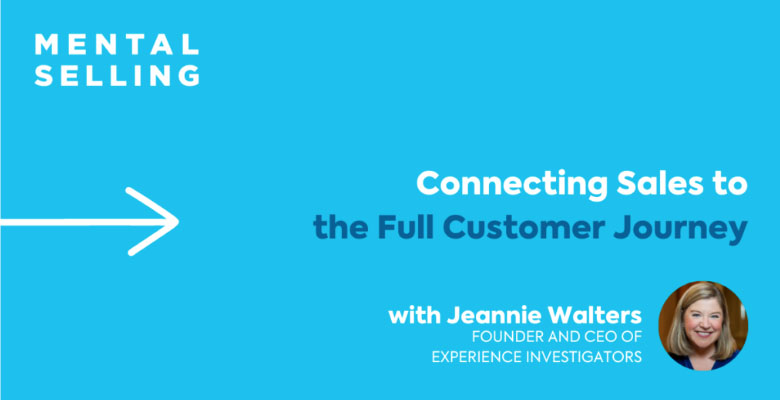Customer Service Training: Empowering A Service Mindset

It’s never been more important to understand your customers and what they value. It’s easy to say that we put the customer first, but what does that actually look like in practice? In the past, customer service centers were viewed as cost centers or expenses. Today, the organizations that are delivering a superior customer experience are proving just how outdated that perspective is. Their emphasis customer service training delivers end-to-end service excellence that is driving strong loyalty, competitive differentiation and direct revenue generation.
But great customer experiences don’t just happen. It’s a never-ending process that we need to nurture, foster and manage.
At the end of the day, customers value organizations for not just the products they provide but the service they receive throughout the customer journey.
To create a true customer service culture where, by definition, customer needs are not just met but exceeded, customer-facing teams need to view customer service and sales as one and the same.
Customers expect to have their needs and opportunities looked out for. When you add real value through problem solving, asking questions and continually presenting new ideas and insights, your customers will view you as a trusted advisor and partner, not just a vendor.
The organizations that consistently forge and maintain strong customer relationships are those that are seen as authentic and that understand how and when (and when not) to leverage technology and automation to improve the customer experience. Most importantly, they always keep the human element of customer service at the forefront.
Creating a culture of service in your organization requires a shift in both skillset and mindset. Understanding what it means to serve customers includes going from reactive to proactive when it comes to solving customer problems or concerns.
In This Post You Will Learn:
What Does Customer Service Mean?
The Impact Of A Customer Service Culture
Enhancing Customer Service With A Sales Mindset
Importance Of A Customer Service Strategy
The Customer Experience Journey
Integrity Service® Customer Service Training
What Does Customer Service Mean?
Differentiating on service isn’t just a smart strategy for growth; increasingly, it’s a survival strategy. In a world where customers have more options available to them — and more ways to vent frustrations publicly — you can’t afford to drop the ball on excellent customer service.
This reinforces why excellent customer service isn’t a function or the domain of some select few within your organization. After all, you can’t consistently deliver at such a high level — at every customer touch point — if only certain people are responsible for making sure it happens.
In fact, exceptional customer service is more than a functional role; it’s a purpose, rooted in a culture and an understanding of what it means to be truly customer focused. Being customer focused goes far beyond what someone does; it’s also about attitudes, values and beliefs, those inner motivations and sense of purpose.This emphasis and understanding through customer service training, of both how you do it and why you do it is what sets apart some of the world’s most successful and resilient organizations.
WHY EXCELLENT CUSTOMER SERVICE MATTERS
Differentiating on service isn’t just a smart strategy for growth; increasingly, it’s a survival strategy. In industries like retail, for example, the past couple of years have raised the bar on customer service expectations. A recent study showed more than half of those surveyed (58%) said their customer service expectations are higher today than they were before the pandemic.
It’s smart business, too, considering 90% of Americans use customer service as a factor in deciding whether or not to do business with a company. Just as significant, 96% of customers say customer service is important in their choice of loyalty to a brand. Investing in customer service can decrease your churn rate, which decreases the amount you have to spend on acquiring new customers and decreases the overall Customer Acquisition Cost (CAC).
In the banking sector this is especially apparent. New research found that just one in five banking customers feels valued by their bank, while good customer service (along with trust and reliability) was cited as having the biggest impact on their decision to stick with a provider.
The bottom line is, no matter how great your product offerings are, in a world where customers have more information available at their fingertips, more options available to them and more ways to vent their frustrations publicly, you can’t afford to drop the ball on service.
WHAT IS EXCELLENT CUSTOMER SERVICE?
We know customers expect it, but just what does it look like to deliver exceptional service?
In an age of AI and technological innovation, great service still boils down to the human factor. Customers want empathy. They want to feel heard. Really heard. They don’t want ten minutes of on-hold music only to hear canned, scripted responses that ignore their real issues and needs.
Excellent customer service is what you get from someone who’s empowered to solve a problem and go above and beyond for you — someone who views themselves as your advocate. Mistakes happen, but people who provide exceptional service go a long way toward cementing loyalty to the brand, even when an issue comes up. They do it by slowing down, truly listening in ways that both validate your stated needs and uncover your unstated needs and asking thoughtful, insightful questions. In other words, they have a conversation with you.
Another common quality among those who provide great customer service is that they do it right the first time. That’s why it’s so critical to empower your customer service teams to focus on improving first call resolution (FCR). This is the percentage of customer service calls that get resolved on the first attempt.
No customer wants to have to wait a long time for a resolution to their issue or make multiple calls and speak with different agents restating the same issues over and over again. Doing it right the first time tells your customers that you value their time and that the people in your organization have the power to solve problems in the moment.
WHAT TO LOOK FOR IN CUSTOMER SERVICE TRAINING PROGRAMS
A customer service culture has to be built on more than just words. Talking about a customer service culture is important, but having an efficient, always improving process is what creates that culture and makes it last. That’s also why investing in people’s success and development has to be part of the customer strategy.
An effective customer service training program will take into account the process, skills, behaviors, attitudes and values that are required to consistently deliver amazing customer experiences. Some key factors to look for:
Adapting Processes To Customer Needs
Training needs to prepare teams for today’s customers, who expect a personalized and seamless omnichannel experience. They want 24/7 help available to them, and they want it in the way they want it — whether that’s by phone, online chat, email or any other method they choose to contact your organization. Your people and processes have to adapt and meet the customer where he or she is.
Training needs to focus on helping your teams understand how different customers want to be communicated with and then giving them the skills and tools to tailor their approach to provide consistently excellent service across channels and customers.
Concepts Grounded In Core Values
Your treatment of employees is more visible and apparent than you think, and it has a great influence on customer buying decisions. During the pandemic, 59% of consumers and 71% of business buyers switched to companies with values that aligned with theirs. Because the customer experience (CX) will mirror your employees’ experience, your mission, vision and values have to be clear and embedded into the culture.
Clearly define what “customer-centric” actually means as a core value in your organization, and then pull it through into your customer service training. Training and coaching will activate your values and make them visible to the customer.
Focus On Developing Problem Solvers
Customer service teams that are empowered to take ownership for their performance and results consistently deliver greater value for their customers. This requires specific skills, such as critical thinking, questioning and active listening, and it also requires inner motivation and practical processes to keep them on track.
Training needs to help people align their attitudes, behaviors and beliefs with a problem-solving mindset and unlock their drive to create more value for each and every customer. It should also include an effective problem-solving process that helps them engage with the customer so they can discover not just the problem but also the true cause of the problem — as well as all the viable options for solving it.
Just as important, managers need to be able to coach and support their people, helping them tap into their purpose and hold themselves accountable for their impact.
Emphasize Being Human
Sometimes empathy matters as much as solving the problem. How often have we all thought, “I don’t need you to solve this for me; I just want to heard”? Teaching people to take a moment and listen and simply appreciate the customer’s frustration or problem is vital. At its core, this is really just about being human, but it’s not always so obvious. After all, if it were, everyone would be doing it.
Training needs to be centered in a belief that honesty, integrity, customer satisfaction and loyalty come before profits. Part of this comes from aligning training with your core values, and it also requires building the skills to create emotional bonds with customers. When your people show customers they’re committed to addressing the issue, even if they can’t solve it right in that moment, it goes a long way toward creating a customer for life.
AN END-TO-END CUSTOMER SERVICE STRATEGY
Self-service can also be part of great customer service — if it’s done right and designed to truly solve problems quickly and not just keep people from calling you. Features like easily accessible chat functionality, FAQs, clear return/refund processes and others can make the overall customer experience more streamlined and efficient, as long as they are coupled with ease of actually reaching a live, knowledgeable person.
Above all, put your people first. According to a recent study, 69% of employees say they work harder when they’re appreciated. Engaged, loyal employees bring their best to work every day, and that’s what ultimately creates engaged, loyal customers.
When trust is high between leadership and front-line CX/customer service teams, they’ll be empowered to make decisions that are in the best interest of the customer, without worrying about negative repercussions later. Have a rewards system in place that recognizes when your people go above and beyond. Cross-train them to handle multiple scenarios, and provide one-to-one coaching to help head off complacency and boredom and improve retention.
It’s true that some people just have a knack for being great at customer service, but even they can struggle in organizations where customer focus isn’t central to the brand. That’s because everyone plays a part in the customer journey. Managers have to coach and set expectations around a customer-focused approach. The culture has to prioritize a seamless end-to-end customer experience through a common language, skills and mindset. And everyone has to have the motivation and commitment to deliver on the promise.
Customer Service Culture
Customer service used to be viewed as the final link in the overall chain of customer touch points, a responsibility relegated to a department, contact center or automated attendant that would respond to complaints and (hopefully) eventually make things right.
Most companies now recognize that customer service is much bigger than a single function that operates primarily in a reactive manner. In fact, in many cases, superior customer service is now one of the most powerful secret weapons an organization has.
In one recent study, among many with similar findings, 78% of respondents said good customer service is fundamental to earning their loyalty and business. And retaining those customers is serious business: Just a 5% increase in customer retention can produce more than a 25% increase in profits.
Clearly, a customer service culture pays dividends, and that’s just one of the reasons you see so many companies touting their “customer obsession” through values like empathy, friendliness, accountability, honesty and transparency. Leaders know that customer expectations are higher than ever.
With the advent of more sophisticated customer service technology, many organizations are now frantically researching and adopting new solutions that they hope will reimagine the contact center. But automation, AI, AR, video and others are only tools. They’re not the centerpiece from which a culture can emanate — and, increasingly, they won’t be a differentiator for your brand. Like everything else related to business culture, your unique customer service culture hinges on your people.
BUILDING A CUSTOMER SERVICE CULTURE TAKES MORE THAN WORDS
There are so many catchphrases about customer service. “We value you as a customer.” “Your business is important to us.” “Customers come first.”
These are all perfectly fine statements as long as you remember that they’re just words. A customer service culture goes beyond just words and demonstrates the values of being customer focused everyday in the attitude, behavior and action of each employee.
Human connection is pivotal, even when everything goes right, but especially when an issue can’t be resolved. The best customer service reps make customers feel heard and appreciated, which results in long-term loyalty to the organization.
THE VALUE OF PROCESS IN CUSTOMER SERVICE
The big problem is that too many companies are failing the customer, the rep and the business by not equipping their people to effectively with customer service training meet customer needs.
But investing in customer service training isn’t a guarantee that you’ll have the desired impact on day-to-day behavior and the work environment. It takes more than product knowledge and a script to help someone be customer focused. Training, values and the overall culture need to be aligned and interconnected. A common language and process for how we treat people (whether internal or external customers) is the glue that brings them together.
For customer service training to make a lasting impact both inside and outside the organization, it needs to be grounded in process.
We’re all individuals. We all have different motivations and personalities. And of course, we’re all human — we each have good days and bad days. A process is what keeps you anchored, consistent and aligned with the values the organization advertises to the world. Talking about a customer service culture is important, but a process is what helps create and fuel that culture.
Here are some of the hallmarks of An effective customer service process, one that will serve the needs of your learners, your culture and your customers.
Let People Demonstrate Their Best Every Day
The best problem-solving process enhances what people already do best. Ideally, it enables them to do it more consistently and effectively, because they have that anchor to go back to when they start to veer off course.
By helping people align their attitudes and beliefs with the cultural expectations, it also provides a clear path to follow, one that makes the values tangible and actionable.
Good Training Changes Mindsets About Problem Solving
A script or product FAQ only skims the surface of a problem. To fully solve the problem and build stronger customer loyalty, you have to go deeper.
An effective problem-solving process helps people engage with the customer so they can discover not just the problem but also the true cause of the problem as well as all the viable options for solving it. It also reminds them to follow up to make sure the solution really worked.
A Neutral Baseline For Accountablility
When you have a common framework and approach for how customer service values translate into daily behaviors, you can hire, coach, evaluate and train to it.
It’s impossible to coach to everyone’s personality. A process gives you an objective standard and reference point.
Make Superior Customer Service A Cultural Requirement, Not A Job Requirement
For example, at one large international energy company, customer service culture is about creating “customers for life.” Customer service training isn’t relegated to a specific job title or department; customer service is central to their company growth strategy.
The company launches training with as many divisions and roles as possible — together — to build stronger collaboration across departments so they can increase communication, productivity and overall customer focus. They know that without buy-in and role-modeling from the top, the culture won’t take hold and be unified across the organization. Having a consistent process makes it that much easier for everyone to get on board and on the same page.
Creating Opportunities To Strengthen Customer Loyalty
While poor customer service can drive customers away, a good process can turn them into your biggest fans. When you’ve solved a customer’s problem effectively and demonstrated through your behaviors and follow-up that you really care, there’s a good chance that customer will be even more loyal than one who never had a problem to begin with.
Customer Service Culture Should Permeate Every Touchpoint
A reactive, end-of-lifecycle approach to customer service is old school thinking. To get the biggest impact, a customer service mindset has to be instilled across the organization. That’s what culture’s all about. And that’s why you can’t limit what you do to just your call center and service teams.
Your leaders and managers play a critical role in making sure you have alignment and accountability for excellent customer service at every customer touchpoint. Effective coaching is what closes the loop.
It reinforces the why, the purpose and the values that connect teams to each other and to the mission. It reminds people of how the work they do every day is making a difference for the customer.
That’s a powerful motivator. It greases the wheels of collaboration. It creates more energy and engagement. This all makes it easier for everyone to keep the customer at the center of everything they do.
Enhancing Customer Service With A Sales Mindset
From customer service to marketing to product development, the job of selling is no longer confined to those people working within the sales organization. But just because leaders are on board with the notion that “everyone is in sales,” that doesn’t mean everyone is comfortable with taking on that role and should be included in customer service training.
What Does Having A Sales Mindset Mean?
For many people, “sell” is still a four-letter word, and definitely not something they want to be associated with. Who can blame them, really. People’s view of selling has been shaped for years by negative portrayals in media and also from their own unpleasant personal sales experiences and interactions. Shifting this prevailing negative view of selling is at the heart of our work at Integrity Solutions.
True sales professionals create immense value for their customers. They are committed to understanding their customers’ wants, needs and desires, helping them work through what’s most important, and then finding the best solution for them. As anyone with customer experience responsibilities already recognizes, getting to know what your customers want and being able to fulfill those needs is fulfilling and purpose-fueled work. Who wouldn’t want to do that?
The issue, then, is really about mindset. What does it mean to be in sales (or, at least, to have some degree of sales responsibility)? What is it that customers truly want? And more specifically, how do we change people’s mindsets from this is a sale we’re doing to someone to this is a service we’re doing for someone?
In an episode of the Mental Selling podcast, Bobbi McVey-Blath, owner of Level Up Facilitation Group, explored this shift in mindset in greater detail.
Customer Service Sales Mindset
This kind of mindset shift will enable everyone within the company to comfortably and confidently adopt a role in selling, and bridging that gap between the two will have a huge, positive impact on the customer experience.
Let’s take a closer look at this combined sales/service mindset and how you can help non-salespeople deliver even more value to your customers.
Changing Mindsets About Selling
It’s true that the word “sales” comes with a lot of baggage, conjuring up images of the stereotypical fast-talking huckster, manipulating people into buying things they don’t even want or need. Unfortunately, training and internal processes often reinforce this negative mindset of what it means to sell.
A primary focus on traditional selling skills and processes that emphasize “pushing products” over solving problems and building relationships can leave people with the impression that sales is something you do to the customer, not for them. If you’re all about the customer experience, this approach goes against everything you believe in and care about.
What if, however, you defined selling as identifying and filling needs people have and creating value for them?
Imagine if your customer service professionals described their jobs not just as, “I’m here to serve customers” but also as, “I can serve customers better by identifying additional needs they have.”
To begin this sales mindset shift, every employee should ask themselves:
- Am I clear about my purpose?
- Who, specifically, are my customers?
- What are their expectations?
- How can I exceed those customer expectations?
These are the roots of productive sales conversations and strong relationships, regardless of whether you’re selling and serving an internal or an external customer. When sales is positioned in this context, it becomes clear how closely aligned it is with customer experience. Your people will ask better questions, dialogues will go deeper and customer loyalty can and will rise.
The Customer Value Curve
Part of this sales mindset shift is about rethinking the focus of the sales role. There are three common areas of sales focus:
Transaction-Focused Mindset
In a transaction-focused role, we’re looking for efficiency and accuracy. That’s it.
For example, let’s say you work as a bank teller and a customer comes to your lobby window. They want to make a deposit. Your job is to process the deposit, hand over the receipt and wish them a nice day. You’re done. But did you meet every need that customer has? Do they feel like they received unique value from you? Probably not. This sort of mindset is how commoditization grows, and it makes customer loyalty elusive.
Product-Focused Mindset
In a product-focused role, we look for mass product movement.
To continue the banking example, let’s say your boss asks you to sell 20 more debit cards this month compared to last month. This means you need to push 20 cards on 20 customers (regardless of their stated needs) every day until you hit your goal. This may be an annoying tactic, but it’s not necessarily evil or bad. It’s also not likely to create any kind of long-term customer loyalty.
Customer-Focused Mindset
In a customer-focused role, we look for providing exceptional service and an exceptional overall customer experience.
With that in mind, you’ll naturally be asking key questions from the outset to learn what your customers’ specific needs are. You’ll be approaching the conversation from a place of genuine curiosity rather than selfish interests. You’ll work to find out what the customer could benefit from. What do they need or desire? Is it convenience? Time savings? Security or risk mitigation? Cost savings? How can you make that better for them?
Changing that focus not only creates more value for your customers, it also eliminates much of the internal resistance non-sales professionals might have about fulfilling their selling responsibilities.
A Sales Mindset Equals Customer Focused
Ultimately, the more you serve and fill the needs of others, the more meaning you’ll enjoy. The more meaning you enjoy, the more engaged and committed you’ll be to customer service and the more you will achieve for yourself, for the company and for your customers. It’s all part of why we say sales is one of the most rewarding and noble professions you can be in — whether it’s in your job title or not.
Customer Service Strategy
Defining customer service in any organization should begin with developing a strategy. This sets the expectations for employees and provides an outline for them to follow when working with both external and internal customers.
Implementing A Customer Service Strategy
A simple and amazingly effective way to do this is to make your customer service strategy a “Standards of Behavior” agreement. Have everyone, from CEO to receptionist, sign it. This document can address any and all aspects of behavior at work, from interaction with clients and colleagues to email etiquette to “good manners” (e.g., saying thank you) to “positive attitude” markers (e.g., smiling and eye contact).
Here are some tips to get you started on implementing a customer service strategy and incorporating it into a Standards of Behavior agreement for your company that instills integrity into every interaction.
Get Employee Input
Do not have Human Resources write it and impose it on everyone else. Instead, put together a cross-functional “Service Team” to spearhead the initiative and create the first draft.
Be sure that everyone has a chance to review the document and provide input before it’s finalized. Buy-in requires company-wide participation.
The Standards of Behavior
Take a look at your organization’s long-term goals and areas that need improvement, and make sure the content of your Standards of Behavior supports and promotes these outcomes. This is especially relevant where staff performance is constantly measured and rated by customers.
Review customer service training programs, related coaching and development plans to make sure they align with and reinforce the standards for customer communication.
Be Clear And Specific.
Keep in mind, what’s obvious to you isn’t necessarily obvious to everyone else. Sometimes people really, truly don’t know.
Rather than a statement like “Display a positive attitude,” make your standards tangible by identifying specific behaviors you expect to see. For example, you might say, “Smile, make eye contact and call people by name.”
Standards of Behavior Rollout
Conduct an employee forum or company-wide meeting to introduce the standards and distribute pledges for everyone to sign.
Create an event around your CEO and leadership team signing the pledge, and be sure everyone signs it. It’s amazing how much more seriously people take rules once they’ve signed on the dotted line.
Develop activities to educate employees about some of the points and integrate them into other customer service training programs you’re implementing.
Consider highlighting a designated “standard of the month” to boost ongoing awareness and get people thinking about how that specific one applies to their day-to-day work.
Hold People Accountable
The whole point of the document is to set consistent expectations and accountability, so make sure all employees know they will be held accountable for the behaviors outlined in the Standards of Behavior document.
How you do this will depend on the situation. Sometimes, a simple meeting with the employee highlighting the specific standard is all you need to do to remind them of their commitment to the pledge they signed. Other times, stronger disciplinary measures may need to be taken.
Customer Service Strategy Reinforcement
One of the great things about a Standards of Behavior document is that it can be used as a learning tool and ongoing customer service training. It keeps the customer service strategy on track and top of mind. Because the standards are specific and articulated in everyday terms, they’re also highly practical. Departments can use them to work through real-life situations with clients and explore ways to handle common challenges when dealing with dissatisfied or angry customers.
Through this process, and as your company grows and evolves in new directions over time, you may also discover new standards are needed or that you need to refine what you have. Make changes as necessary. Your Standards of Behavior should be a “living document” that serves your company’s customer service strategy and reinforces the culture you want to perpetuate.
Ultimately, a Standards of Behavior document will encourage people to do their best and be their best. When everyone is adhering to the right standards and working toward a common goal, morale improves. Job performance improves. Customer satisfaction improves. Profitability improves.
The Customer Experience Journey

Customers need to be put first throughout the entire customer journey. It’s never been more important to understand your customers and what they value. But where does the customer experience begin? And how do you tactically create a consistent experience that will keep customers loyal?
In a conversation for the Mental Selling podcast, Jeannie Walters, founder and CEO of Experience Investigators, shared tangible pieces of advice for putting customers first through their entire journey with your organization.
Walters connects the dots between customer success and sales and explains how the two groups can partner to optimize outcomes for all parties. She also dives into the use of technology in the customer experience, revealing how it can help and where it can hurt.
Listen to this episode of Mental Selling
Contact Center Training
Most contact centers perceive themselves as more strategic than tactical, monitoring and driving business metrics like customer satisfaction rather than tracking, for example, the number of calls per agent. But do the organizations that are recruiting and training their team members have the same view?
Companies are increasingly putting themselves at risk of letting down and losing customers and doing irrevocable damage to their brands. “Low performing” contact center agents directly impact the business through low call resolution rates, poor customer satisfaction, poor operational efficiency and low employee satisfaction and engagement.
Human intervention and solutions are at the root of what customers want. And all the various forms of technology are making it more difficult, not easier, to connect the dots. In too many contact centers, data gathering has become more important than solving problems, being empathetic and listening to uncover needs.
Contact Center Experience
With an evolving customer expectation to fast-track problem resolutions, this focus on the data might, on the surface of things, seem to make sense. But that’s the problem: It only scratches the surface of what will positively impact the KPIs contact centers themselves have said are most important.
Today’s customers expect not just faster response rates but faster resolution. They want the issue to be addressed in full on that first contact, without being transferred to someone else or redirected to another department. A Salesforce study found that 82% of customers expect to solve complex problems by talking to one person.
It’s yet more evidence that customers still value the human experience, especially when the humans they’re interacting with have both the motivation and the skill to make sure their unique needs are being met.
Contact Center Management
A resurgence and importance of the human aspect in customer service has risen steadily along with the increased adoption of AI and automation. In order to create a customer-centric culture that is aligned between employees and customers and is truly dedicated to creating engaging, memorable customer experiences, we need people to connect the dots between technology — including sales enablement investments — and what customers want.
Contact center management needs to take a hard look at what they’re investing in and whether these investments are really delivering on the metrics they say they care about or something entirely different.
Is that investment in conversational AI about meeting customer needs and solving problems (i.e., call resolution)? Is it about creating loyal customers? Or is it really just about minimizing costs, getting the customer off the phone/chat as quickly as possible and “maximizing ROI,” regardless of whether the problem is truly addressed?
Contact Center Training
Companies are increasingly putting themselves at risk of letting down and losing customers and doing irrevocable damage to their brands. “Low performing” contact center agents directly impact the business through low call resolution rates, poor customer satisfaction, poor operational efficiency and low employee satisfaction and engagement.
Human intervention and solutions are at the root of what customers want. And all the various forms of technology are making it more difficult, not easier, to connect the dots. In too many contact centers, data gathering has become more important than solving problems, being empathetic and listening to uncover needs.
Training people to press the right button faster isn’t going to create a profoundly remarkable customer experience. It’s also not going to create a personally satisfying and meaningful experience for your employees. If you want to deepen customer loyalty and satisfaction, you have to engage your agents both from a skillset and a mindset perspective.
Agents who view their roles as problem-solvers and value creators, for both the customer and for the business, are going to be more internally motivated and energized to deliver those profoundly remarkable experiences that turn customers into brand advocates.
Integrity Service® Customer Service Training
Integrity Service® is a comprehensive process of customer service training designed to help people understand what it means to be a truly customer-focused organization. Participants in Integrity Service® are better able to identify and serve internal and external customers, focus on their job purpose versus job function and understand how attitudes, motives and values influence the perception of service.
Customer Service Teams Learn:
- How to maintain a customer service attitude
- Techniques for asking questions and listening
- Practical problem-solving formula
- The value of a positive attitude and a genuine desire to assist customers
Integrity Service® is customer service training that will motivate your team to bring their best to your customers every day, to create long-term, loyal customers that results in superior long-term growth.

Chief Marketing Officer
Related Blog Posts



